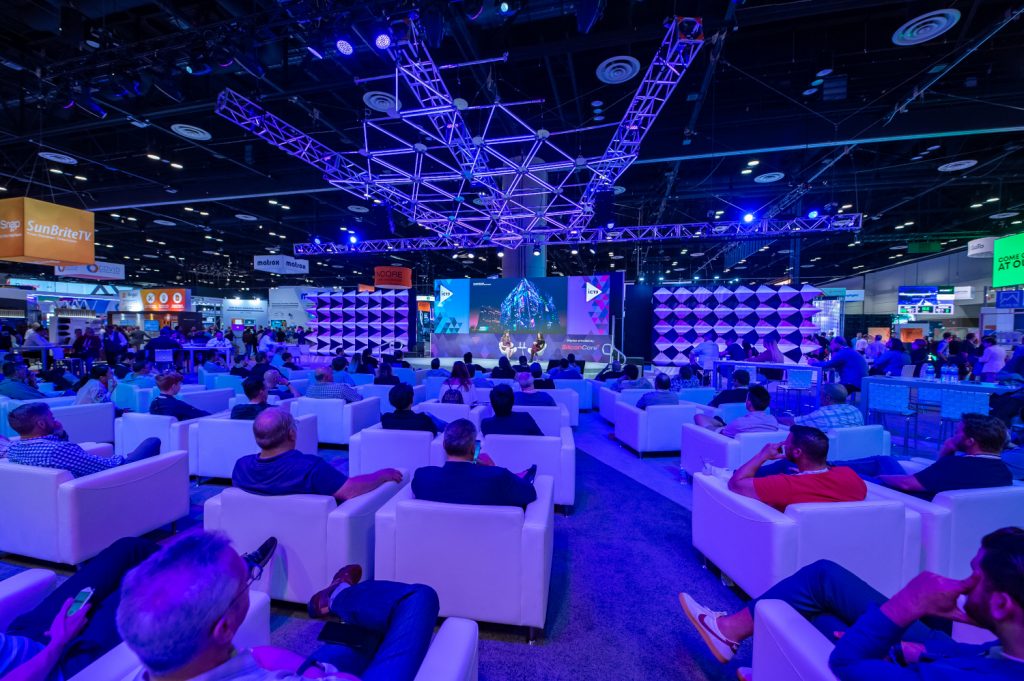One of the forest-for-the-trees issues within the broad commercial AV industry is an assumption that, at the forest level, project work in this space is all about the sale and permanent installation of audiovisual technologies. However, a trip down into the trees reveals a different reality. Although integrated solutions are a sizable portion of the industry, temporary utilization through pop-up events or experiences is an important component of the AV solution set, generating strong revenues.
Because of the contributions of these applications, and to help facilitate broader understanding of them, AVIXA has undertaken two distinct studies on live events this year. Those are in addition to ongoing efforts to measure the revenues they bring to commercial AV. What follows are some of the key findings of the most recent of the two studies, covering the corporateevents space.
Corporate events represent a growing market, and its dynamics are distinct from both the installed-AV and the performance markets.
Of the $247 billion global AV market this year, the live-events component represents $26.7 billion—a sizeable portion. The term live events includes both live-performance events (touring concerts, primarily) and corporate events. However, the fact that the corporate-events market is not a separate AV vertical, but, rather, a set of solutions that cuts across all AV verticals means that corporate events represent a great opportunity for growth. And corporate events’ growth dovetails with the booming global business-travel market (worth more than $1.3 trillion in 2017). That’s good news by any measure.
Attendees are treating “work events” as if they’re leisure events, showing attendance discretion based on high expectations for technology benefits and performance.
A corporate live event at a convention or trade show, although work related, often has to compete with concurrent events; as such, attendees have choices about which events to attend. In addition, respondents frequently attend events that are not strictly required for their job; thus, they are not a “captive audience.” Their responses to our survey questions reveal what providers can do to make people excited to attend their events. For example, in an industry in which most of the activity has been on a stage at the front of a room, “interactive touch displays” topped the list of what most substantially enhanced an event for attendees. Digital signage also came to the fore in our survey as a desired/ requested tech solution, enabling better wayfinding and increased event personalization, among other benefits.
The end users—the gatekeepers, in most cases—are spending more on technology, while demanding better solutions and better workflow.
The end user—often the event producer or meeting planner—is responsible for arranging for the provision of AV gear and/or AV services for the corporate event. And these end users spend a significantly higher percentage of their total event budgets on AV than customers in AV-integration projects do, or as compared to AV for the entertainment/performance market. Half of the event producers and meeting planners surveyed plan to increase the amount of owned gear in their inventory. They also see the direct benefit of using great AV for their events, and they’re showing increased interest in new initiatives like creating digital archives of the events and doing more event streaming.
The dynamics for AV providers are unique in corporate events: They are both the end user of AV gear and the services provider for a new kind of experiential demand.
The AV service providers for corporate live events are the end users of AV gear: They either buy AV equipment for their own inventory to use for their customers’ events or rent AV equipment for them. They balance each activity according to their own changing financial position and exposure, their pipeline of jobs, their customers’ needs and market evolution, including the emergence of new technologies, products and solutions. As AV providers, their most promising market is providing experiential technology and services, and these go beyond virtual reality (VR) and augmented reality (AR). A VR headset is fun, but top AV stagers and gear providers are looking beyond that; a new kind of “collective VR” is more appealing in this market, and it’s catching on fast.
Of course, the preceding is only a sampling of the extensive research represented by AVIXA’s report. In its pages, you will find the results of three distinct surveys corresponding to the various components of the corporateevents value chain—audiences, meeting planners and events producers, and live-events solution providers. In total, the report forms a comprehensive look at the market for constituents who are either looking to enter the temporary-solutions space or already serving it.
Make sure to take a look at www.avixa.org/insight/marketintel for more information.
